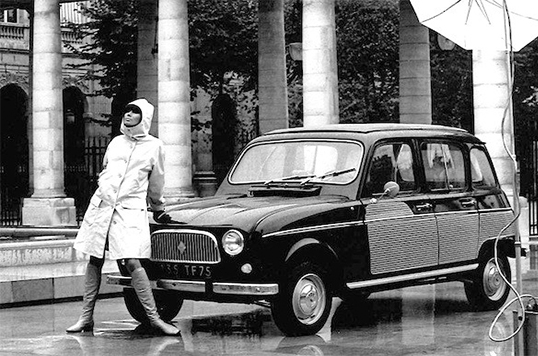
Renault, car manufacturer closely linked to the history of France
"Renault factories reflects the close ties between France and the car manufacturer since the beginning of the 20th century, as much by its emblematic models as its status as a national company for almost half a year, century."
The emotion aroused by the possible closure of Renault factories reflects the close ties between France and the car manufacturer since the beginning of the 20th century, as much by its emblematic models as its status as a national company for almost half a year, century.
The company has been allied since 1999 to the Japanese Nissan, in which it holds 43% of the capital. Reinforced by Mitsubishi in 2016, the group reached the ephemeral first place in the world the following year for the number of cars and light commercial vehicles sold worldwide.
The company in Losange, chaired since 2019 by Jean-Dominique Senard, defector of Michelin, employs more than 179,500 people (including 27% in France) and distributes its vehicles in more than 130 countries.
Last year, the manufacturer (with its brands Dacia, Lada, Alpine and Samsung Motors) sold 3.75 million vehicles (-3.4% year on year), and above all suffered its first net loss in ten years, to -141 million euros, on a turnover of 55.5 billion.
It was in 1898 that the young autodidact Louis Renault built his first automobile, the "Type A", in Boulogne-Billancourt, near Paris. The following year, the company Renault Frères was founded, whose commercial success extended before the First World War thanks to the sporting exploits of its models.
Mobilized for the war effort, the Renault factories produced ammunition, but also the FT light tank, which contributed to the Allied advances before the Armistice of 1918.
At a time when its new competitor André Citroën is enjoying great success by applying American methods, Louis Renault is also modernizing its production tool. This goes through the giant factory on Ile Seguin in Billancourt in the early 1930s.
But the Second World War reshuffles the cards. The Renault factories were requisitioned by the occupier, and in 1944 Louis Renault was arrested on the grounds of collaboration. He died in detention a few weeks later.
The government then nationalized the company, which became the "Régie Nationale des ateliers Renault" and was entrusted with the construction of entry-level cars: the 4CV and the Dauphine, which would contribute to the motorization of France after- war.
This popular orientation will remain in the DNA of the brand, whether with the Renault 4 of 1961, the Renault 5 of 1972, then, since the early 1990s, the Clio and Twingo, which have regularly figured among the most popular cars. most sold in France and Europe.
Renault, whose industrial presence in France has developed (Flins, Cléon, Sandouville in the Paris-Le Havre axis, but also Le Mans and Douai), is expanding internationally, in particular in Spain, in South America, Turkey, Slovenia, then Morocco and Algeria. Its first Chinese factory was inaugurated in early 2016. The group is also betting on the development of electrics, with models like the Zoé.
Several attempts to conquer the North American market failed, however, and the company struggled to establish itself in the high-end despite innovative vehicles such as the R16 (1965) or Espace (1984).
The Régie has long been considered the "social laboratory" of France, within particular precursory agreements on paid holidays. Union stronghold, it was also one of the epicenters of the dispute in May 1968.
An era ended between 1990 and 1996, with the transformation into a public limited company and a gradual disengagement from the State, which still controls 15% of the capital today. The Seguin Island plant closed in 1992, even if the head office remained nearby.
It was under CEO Louis Schweitzer, in 1999, that the Romanian brand Dacia was bought: it became a commercial phenomenon in the "low-cost" sector. The Korean groups Samsung Motors and Russian Avtovaz (Lada) then joined the orbit of the manufacturer, which also carved out a solid track record in Formula 1.
Renault, which Carlos Ghosn had led since 2005 before his dizzying disgrace following his arrest in Japan in November 2018, benefited from economies of scale thanks to Nissan, which was also a source of juicy dividends before serious trade woes and financial in recent quarters.
Source: AFP
Also Read:
BS6 RENAULT TRIBER AMT 2020 LAUNCHED IN INDIA
RENAULT TRIBER PRICE IN NEPAL | SPECS, FEATURES
HONDA'S LOW-COST BS6 CROSSOVER WR-V 2020'S FACELIFT READY
Click here to Compare Renault Triber with any other Cars



